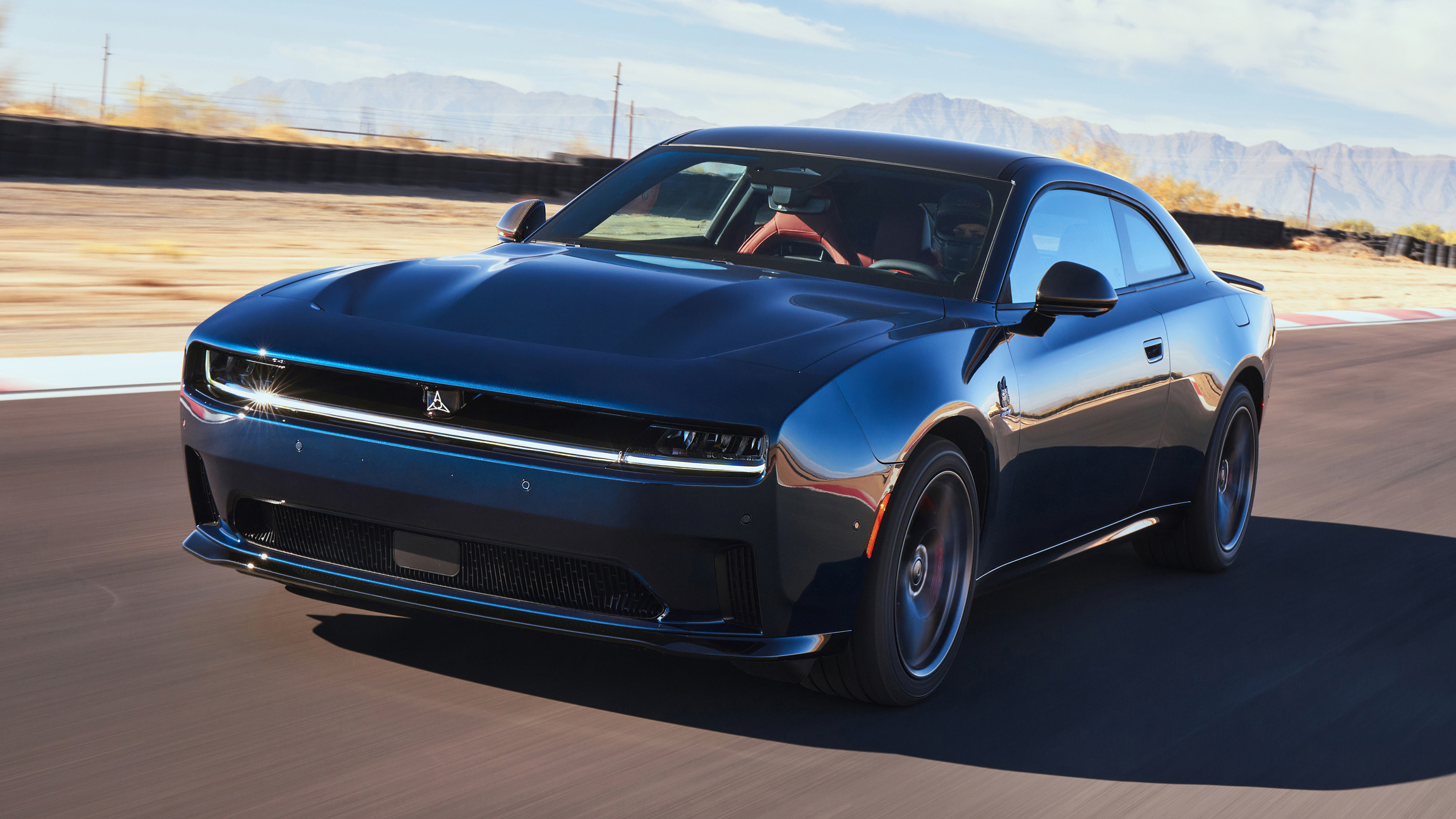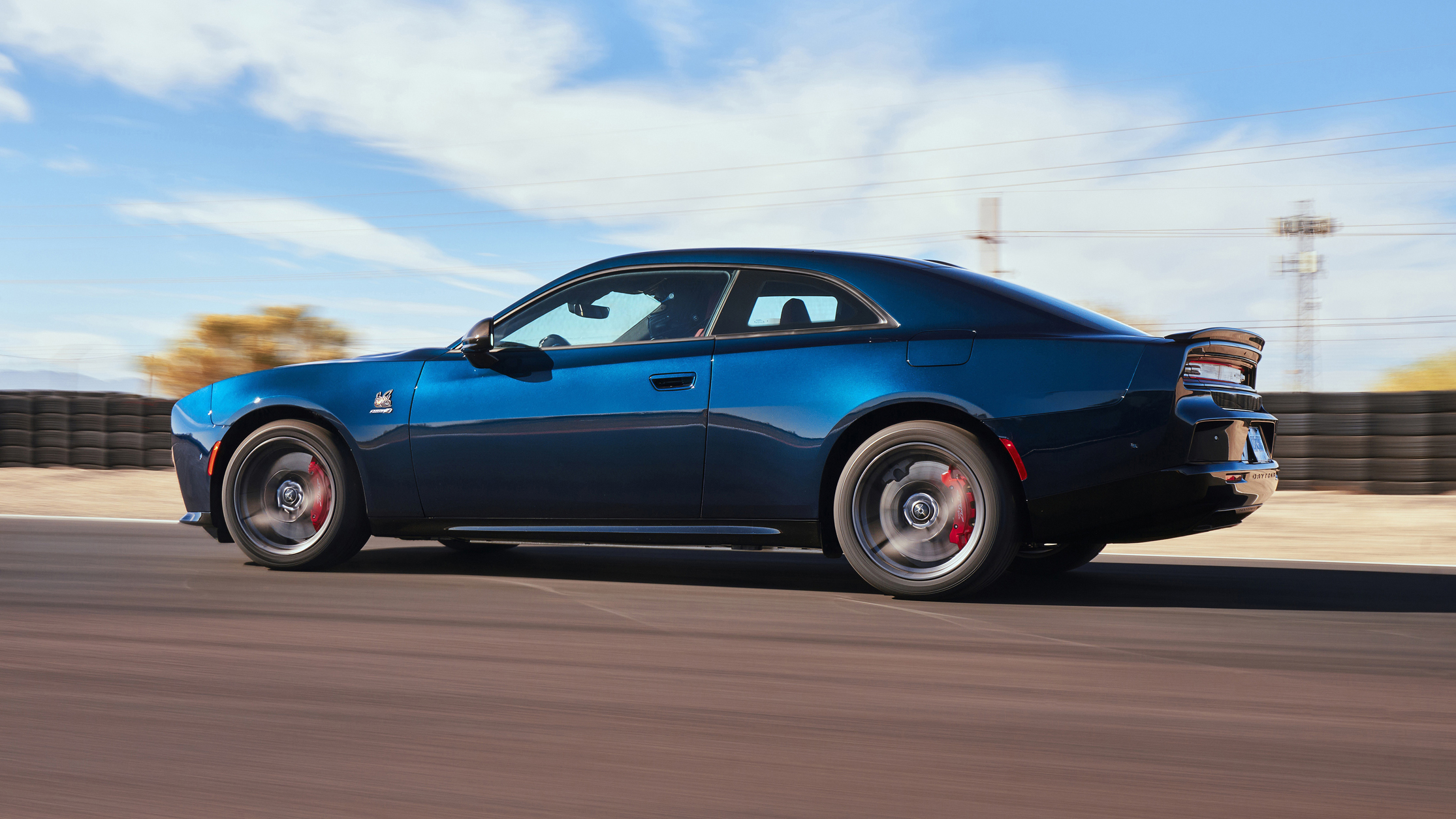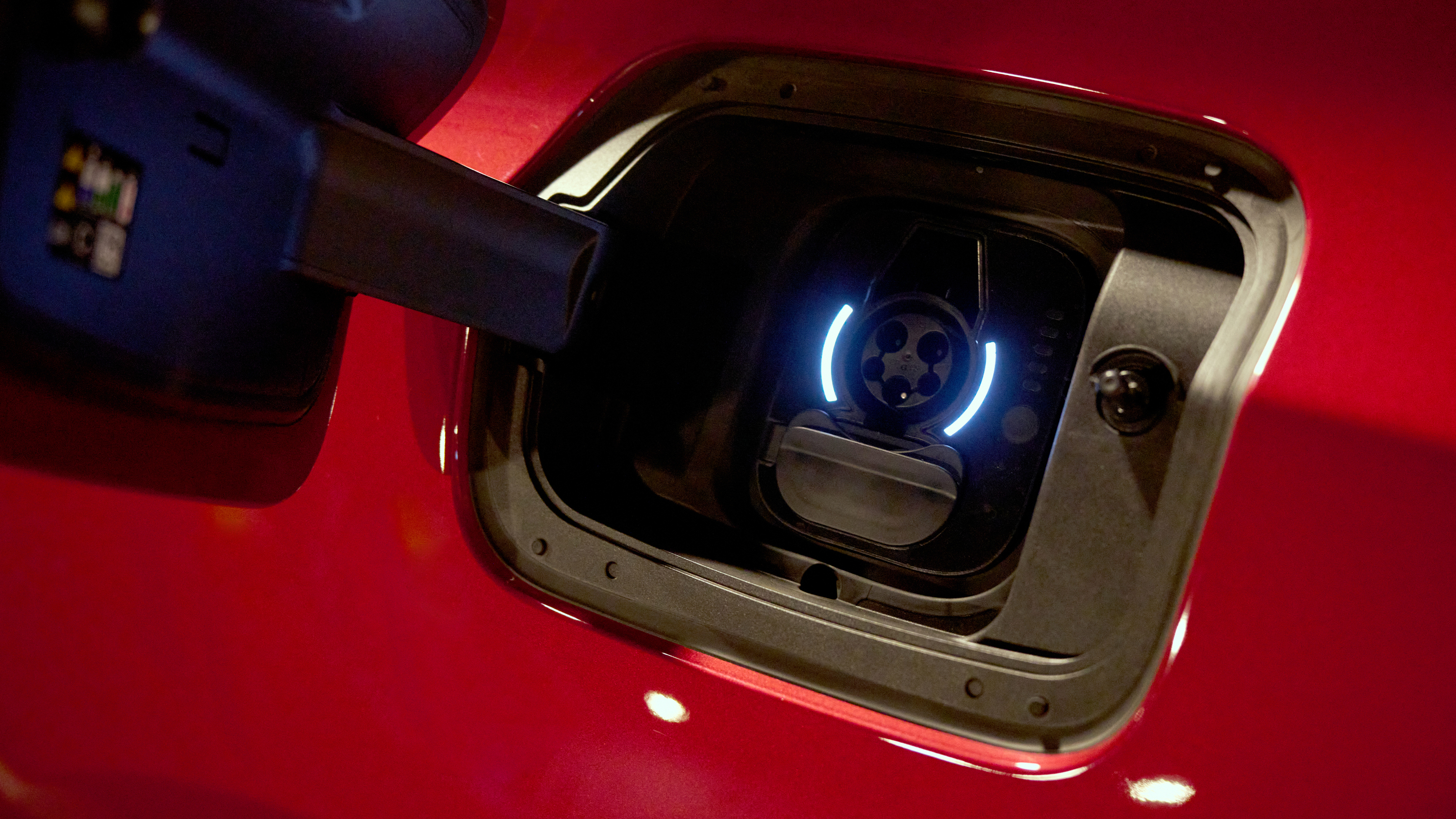
Dodge Charger review
Good stuff
A sleek and powerful EV coupe that’s more practical than it looks, makes loud noises
Bad stuff
Not as naughty as Dodge would have you believe… makes loud noises
Overview
What is it?
An electric Dodge Charger. If nominative determinism was a thing, then the electric revolution has finally caught up with Dodge’s iconic muscle car in a big way. And it’s the car that causes immediate and coarse frown lines in the faithful, it being a dual-motor EV, all-wheel drive abomination according to the Church of V8.
But then, certain people wouldn’t be satisfied unless the new car was running a Procharged 7.3-litre Hemi on open headers with the fuel efficiency of a Iowa-class battleship. All gas, no brakes, those guys. So it’s a tricky spot for a company that has built a modern reputation on Hellcat and Redeye V8s adept at turning unleaded into tyre smoke pretty much at will.
You’ve got two potential invested parties - the muscle car faithful and those interested in EV - and in the Venn diagram of ownership, they don’t tend to play well with each other. Dodge reckons this is the ‘world’s first electric muscle car’. But that might be because no one’s really thought it necessary to build one.
Stats. We need some actual stats.
The headline news is useful, if not that outrageous for a modern electric performance coupe. But there are some chunky numbers in there. Dual motors give all-wheel drive, the motors themselves the same at either end rather than staggered, punching out 335bhp apiece. There’s an ambient 630bhp with a ‘Powershot’ from a switch on the steering wheel for the extra 40bhp, landing at 670bhp and 627lb ft total with all the appropriate buttons pushed.
The sprint to 60mph is completed in 3.3 seconds - outpacing the outgoing relevant petrol-powered Charger - with a quarter mile in 10.5 seconds and 134mph top end. Solid stuff.
Sounds good, what else have we got here?
Dig a little deeper and it gets interesting. There’s a 100.5kWh battery (itself a 450kg+ unit) acting as a stressed member in the middle and plenty of weight. That’s 5,838lb of Scat Pack derivative - 2.63 tonnes for us Europeans - with an EPA range of 241 miles. Which sounds low, but the US EV range workings are far more accurate than Euro-WLTP, so you’ll likely hit that estimate.
There’s a 496bhp R/T variant with 300+ miles of range, and it’s wise to note from the off that this isn’t a bespoke EV - there’ll be twin-turbo straight-six petrol-powered Chargers in ’25, as well as four-door variants. The petrol ones will come as HO and SO (high and standard output), although they will also be AWD.
The weird biohazard-y badges on the cars are actually called ‘Fratzogs’, by the way. A made-up performance indicator sub-brand from the early 1960s, and revived here. Meant to represent power, precision and excellence in Dodge world. Seems apposite.
So what makes this an electric muscle car, rather than just … a car?
Right, this is where it gets both complicated and… less so. Dodge maintains that it wanted an EV that looks, drives, sounds and performs ‘like a Dodge’. In modern Dodge world, that means a reputation built on muscle cars; brawn, noise, attitude and performance.
So you get a ‘Fratzonic chambered exhaust’ which is a set of expansion chambers underneath the car powered by a set of subwoofers and speakers and a 600-watt amplifier. It’s got the kind of start-up flare that will make you jump, and hearing it on a laptop speaker will not do it justice. It’s obnoxiously loud, and makes you laugh.
For a bit. It’s physical enough to vibrate the car, and although it sounds ‘recorded’ at ‘idle’ (forgive the use of parentheses), it actually becomes way more naturalistic on the move when you throw some tyre rumble and NVH vibration into the mix. Lose focus, and it just sounds like a big engine thrumbling away.
There’s also a big focus on performance, with several modes with which to demonstrate just how testosterone-fuelled the car can be. So there’s the usual Auto/Wet/Sport and Track. But also Drag and Drift/Donut with a 2WD option on the latter.
And that’s before we’ve even got to the styling, which manages to inveigle the wide-body (there are no narrow-body versions), rectangular Dodge tropes into a car that also has an aero-friendly ‘R-Wing’ pass through spoiler in the nose.
Two-door only in this initial variant, a hidden hatchback and flop-down seats. It looks like a Jetson’s Charger – visions of the near future, but it won’t scare the animals.
So it’s a hooligan EV?
Ah, that’s where it starts to get a little more complicated. At seven-tenths, the new EV Charger is actually a lovely thing. But try harder and it starts to lose coherence. The weight pushes the nose, the AWD feels very four-square and it never feels violent enough to get the adrenaline really pumping. It’s rapid, but not brutal. There are already naughtier ‘Banshee’ variants in the works, but these two core models are fast rather than furious.
And then there’s the mode-switching. This is a car that comes with a donut and drift mode that simply knocks out the front motor and stiffens the dual-valve dampers, leaving a car with 335bhp, 325-section rears and lots of weight. It doesn’t allow for pedal overlap in terms of brakes/throttle, so it simply can’t do a standing burnout. Yes, a pointless metric for… well, anything…but something a ‘muscle car’ should have in its DNA.
And the Drift mode feels managed - it will do it, but it feels forced and eye-rolling. This stuff can be genuinely a bit mental - something like a Kia EV6 GT’s Drift mode just bonfires the rear tyres; the Scat Pack Charger feels like it’s putting up with you.
What's the verdict?
A really interesting car from Dodge, trying hard to frame what a performance EV might look like when it’s also supposed to be a muscle car. Much like Hyundai’s Ioniq 5 N, it’s got some fun stuff to make it stand out, and that should be applauded. However, some of the modes aren’t aggressive enough, and there’s always a feeling of excess weight that blurs precision and balance. Common with EVs, but notable here.
The overall impression is of a car that apes the tropes of muscle without quite hitting the soul. It’d be a great daily driver for those that want the convenience and comfort of an EV while still having the vibe of a muscle car, but one suspects that the ‘real’ V8 will still lurk in the garage for high days and holidays.
Featured

Trending this week
- Car Review
BMW 1 Series
- Car Review
Honda Civic eHEV
- Top Gear's Top 9
Nine dreadful bits of 'homeware' made by carmakers






